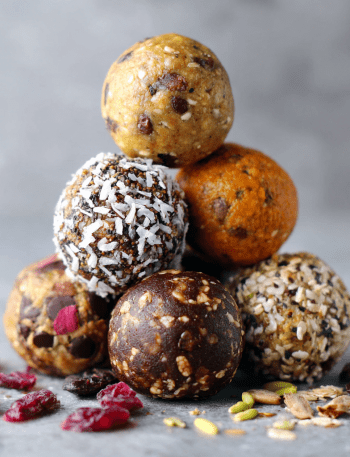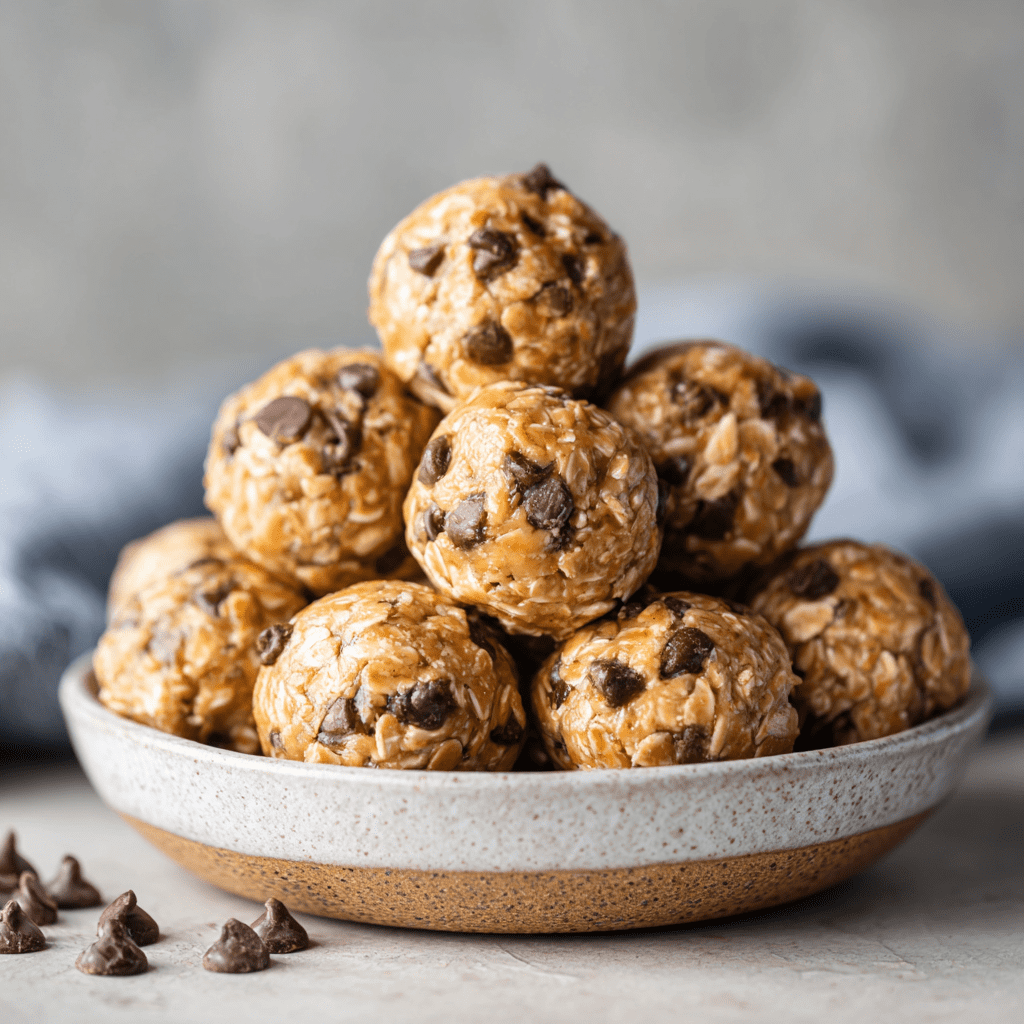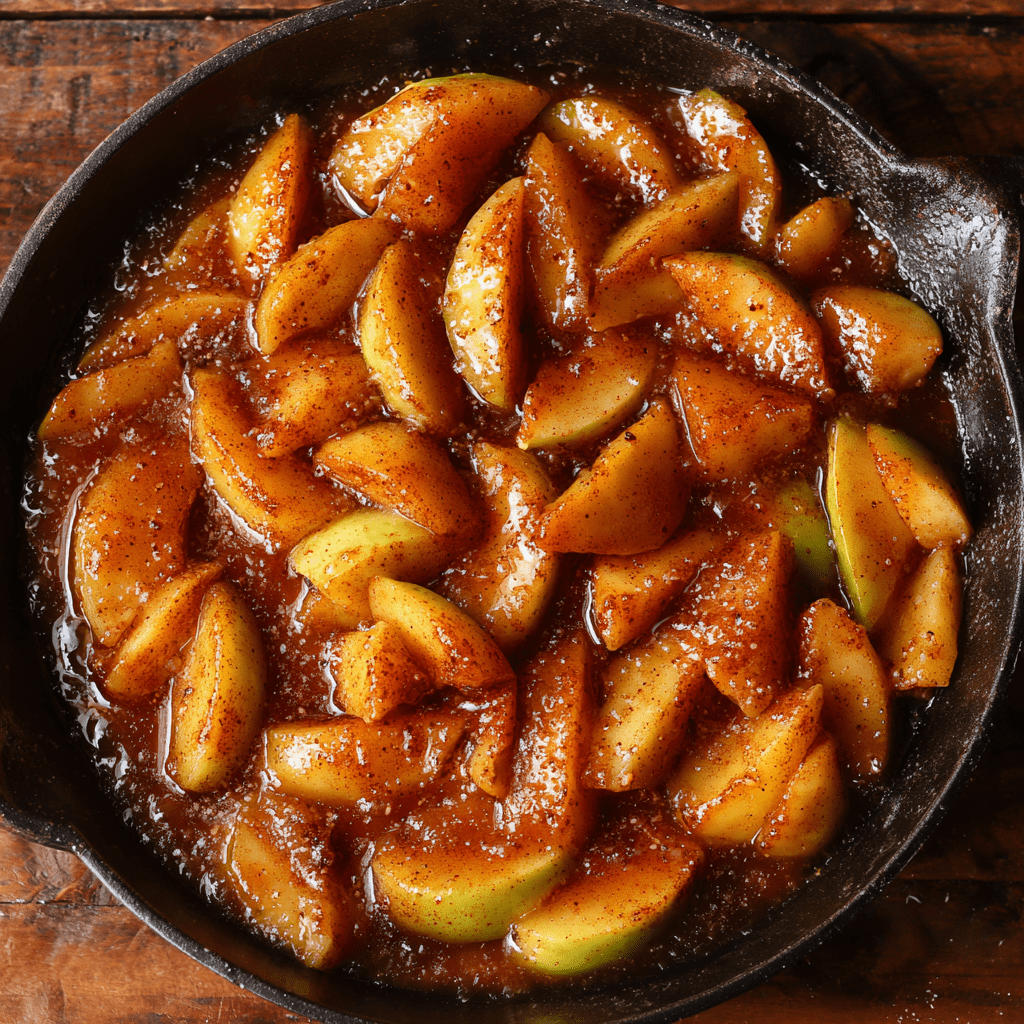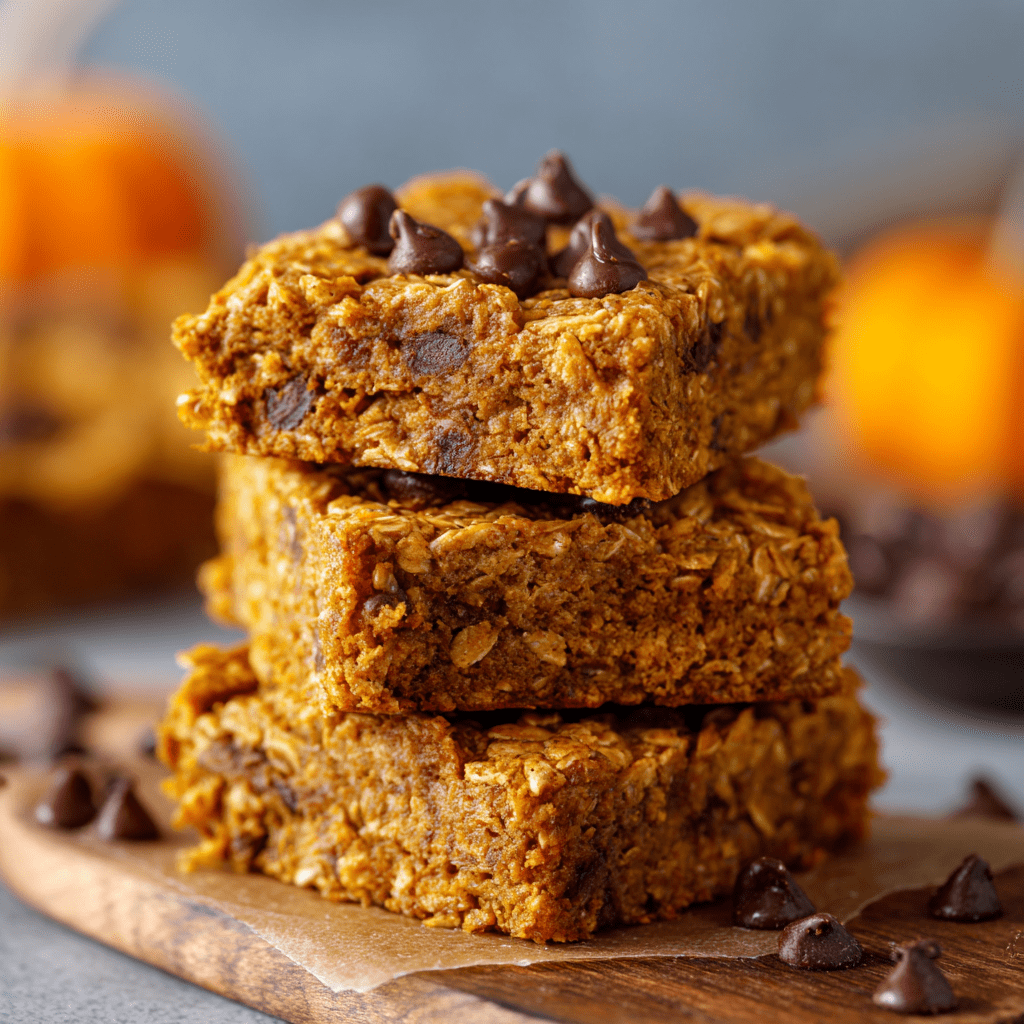Spicy Tuna Onigiri: Your New Favorite Grab-and-Go Comfort Food
Hey there, friend! Let’s talk about one of life’s perfect little packages of joy: the mighty onigiri. If you’ve ever found yourself staring into the abyss of your fridge at lunchtime, wishing for something that’s satisfying, delicious, and doesn’t require a full-scale culinary production, you’ve just found your kitchen soulmate.
Spicy Tuna Onigiri are these incredible Japanese rice balls that are, quite simply, a hug you can hold in your hand. Imagine this: fluffy, slightly sticky Japanese rice forms a warm, comforting shell. Hidden inside is a pocket of creamy, zesty, and perfectly spicy tuna salad that just makes your taste buds sing. The whole thing gets a quick wrap of crisp, salty roasted seaweed (nori) that adds that final *chef’s kiss* of texture and flavor.
Think of it as sushi’s super-cool, low-maintenance cousin. There’s no fancy rolling mat required, no stress about perfect rolls. It’s just you, a bowl of warm rice, and your hands, creating something magical. They’re the ultimate solution for busy weekdays, a superstar in any lunchbox, the perfect picnic companion, or even a sneaky-good late-night snack. They’re portable, customizable, and honestly? So much fun to make. So, tie on that apron (embrace the mess, I always do!), and let’s make something truly delicious together.
The Train Station Treasure That Started It All
My love affair with onigiri didn’t start in a fancy restaurant or a cooking class. Oh no, it began in a bustling Tokyo train station during a life-changing trip I took years ago. I was jet-lagged, a little overwhelmed, and desperately hungry. I ducked into a tiny konbini (that’s the Japanese word for a convenience store, and trust me, they are a whole different universe of amazing).
The sheer wall of colorful, plastic-wrapped triangles and balls was a beautiful, confusing mystery. I pointed at one with a friendly-looking cartoon salmon on it, paid my few yen, and found a spot on a bench. I unwrapped it, took that first bite of the warm rice and savory filling, and my world just… paused. It was the most humble, perfect food I’d ever tasted. It wasn’t just fuel; it was comfort. It was care, packaged perfectly for a stranger on the go. I must have eaten a dozen different kinds that week, each one a new discovery. That simple train station snack taught me a powerful lesson: the best food doesn’t have to be complicated. It just has to be made with intention and a whole lot of heart. This spicy tuna version is my own little tribute to that memory.
Gathering Your Onigiri Arsenal: Simple Ingredients, Big Flavor
Part of the beauty of this recipe is its simplicity. You only need a handful of key players to create something spectacular. Here’s the lineup:
For the Spicy Tuna Filling:
- 1 can (5 oz) Solid White Albacore Tuna in Water, drained well: I prefer solid white albacore for its meaty, flaky texture and milder flavor, but chunk light tuna works perfectly too! The key is to drain it really well so your filling isn’t watery. For a pantry-power-up, you can also use leftover grilled or baked tuna!
- 2 tbsp Kewpie Mayonnaise: This is my not-so-secret weapon. Kewpie is a Japanese mayo made with egg yolks (not whole eggs), giving it a richer, umami-packed, and slightly tangy flavor that’s just incredible. If you only have regular mayo, no worries! It will still be delicious. Just add a tiny, tiny squeeze of lemon juice to mimic a bit of that tang.
- 1–2 tsp Sriracha: This is where you control the heat! Start with 1 tsp for a gentle warmth, or go for the full 2 tsp (or more, I won’t judge!) for a real kick. Feel free to swap in sambal oelek or your favorite hot sauce.
- Optional Flavor Boosts: A ½ tsp of soy sauce adds depth, a squeeze of fresh lemon juice brightens everything up, or a tiny sprinkle of toasted sesame seeds adds a lovely nutty crunch.
For the Onigiri Themselves:
- 2 cups cooked Japanese Short-Grain Rice (like Koshihikari or Calrose), warm: This is non-negotiable for the perfect texture. Japanese short-grain rice is starchier than long-grain, which gives it that signature sticky, clingy quality that holds the onigiri together. Please, please use warm rice! Cold rice from the fridge is too hard and won’t bind properly. Pro-tip: I like to cook my rice with a tiny piece of kombu (dried kelp) for an extra layer of savory flavor.
- Salt, for your hands: This is a double-duty genius step! Rubbing a pinch of salt on your wet hands seasons the outside of the rice ball subtly and, most importantly, prevents the rice from sticking to you like glue.
- Roasted Seaweed (Nori) Sheets, cut into strips: You’ll find these in the international aisle. I like to cut my full sheets into wide strips or smaller squares for easy wrapping. The key is to wrap them *just* before eating to keep that satisfying crispness!
Let’s Get Shaping! Your Step-by-Step Onigiri Guide
Ready to get your hands dirty? This is the fun part. Don’t worry about making them look perfect. A little rustic charm is what gives them character!
- Create the Flavor Bomb Filling: In a small bowl, add your well-drained tuna. Break it up with a fork into fine flakes. Add the Kewpie mayo, Sriracha (start with 1 tsp!), and any optional add-ins like soy sauce. Mix, mix, mix until it’s creamy and beautifully homogenous. Now, do a taste test! This is your moment. Need more heat? Add more Sriracha. Need more tang? A little lemon. You are the boss of this filling. Set it aside.
- The Hand-Prep Hack: This is a crucial step, friends! Fill a small bowl with water and place a little dish of salt next to it. Dip your hands in the water, then rub that pinch of salt all over your wet palms and fingers. This creates a non-stick, flavor-boosting barrier between you and the rice. You’ll thank me later.
- The Art of the Pocket: Grab a generous scoop of warm rice (about ⅓ to ½ cup) and place it in your salted, damp palm. Gently cup your hand and use the fingers of your other hand to press a deep, well-like indent into the center of the rice. You’re making a little rice bowl for your filling.
- Hide the Treasure: Spoon about a tablespoon (or more, if you’re feeling bold) of your spicy tuna filling into that little rice well. Don’t overfill it, or it might burst out during shaping!
- Seal the Deal: This is the magic moment. Carefully scoop a bit more rice from your other hand (or the bowl) to cover the filling completely. Now, gently cup both hands and start to press the rice into a loose ball, applying gentle but firm pressure from all sides. You’re not making a concrete cannonball; you just want it to hold its shape. The goal is to enclose the filling fully.
- Shape It Up! Now, to form the classic triangle shape, cradle the ball in one hand and use the fingers of your other hand to gently press and form one side into a flat plane. Rotate the ball and press to create a second side, then a third. You should now have a rough triangle! You can also just make simple rounds or ovals. No pressure! If you see any cracks, just dab a tiny bit of water on your finger and smooth it over.
- The Crispy Finale: Once all your onigiri are shaped, take a strip of nori and wrap it around the bottom or side, like a little edible handle. Chef’s Pro-Tip: Wait to wrap them until you’re ready to eat! If you wrap them ahead of time and store them, the nori will absorb moisture from the rice and become soft and chewy (which some people love, but I adore the crisp contrast).
How to Serve Your Culinary Masterpieces
You’ve made them! Now, let’s talk about the best ways to enjoy your spicy tuna onigiri.
The beauty of these little guys is that they are a complete meal in your hand. I love serving them on a large platter for a fun, interactive snack at a party or game night. Arrange them artfully with the nori wraps facing up, and maybe add a few small bowls for dipping sauces—like extra soy sauce, a spicy mayo (just mix more mayo and Sriracha!), or even a sweet eel sauce.
For a packed lunch, they are absolute champions. Pack them in a bento box alongside some quick-pickled cucumber slices, a handful of edamame, and some fresh fruit. It transforms a simple lunch into a special treat.
And here’s a little secret from my kitchen to yours: if you want to take the texture to a whole new level, lightly pan-toast them! Heat a non-stick skillet over medium heat with a tiny, tiny drizzle of neutral oil (or use a non-stick pan with no oil). Place your onigiri in the pan and cook for 2-3 minutes per side, until a beautiful, golden-brown, crispy crust forms. The contrast of the warm, crispy outside, the fluffy rice, and the cool, creamy filling is a religious experience. Trust me on this.
Mix It Up! Fun Flavor Twists & Dietary Swaps
Once you’ve mastered the basic spicy tuna, the world of onigiri is your oyster! Here are a few of my favorite ways to play with the formula:
- The “California Roll”: Swap the tuna for finely chopped imitation crab (surimi). Keep the Kewpie and Sriracha, and add in a tiny bit of finely diced avocado (add this fresh when serving) and a sprinkle of toasted sesame seeds.
- Spicy Salmon: Got some leftover grilled or baked salmon? Or even some high-quality canned salmon? Flake it up and use it in place of the tuna for a luxurious, omega-3 packed twist.
- Veggie Lover’s Delight: For a fantastic vegetarian version, mash firm tofu (pressed and drained well) or cooked chickpeas as your base. Season it with the same mayo-Sriracha combo, and mix in some finely chopped scallions and shredded carrots for color and crunch.
- Furikake Frenzy: Mix a tablespoon of furikake (a Japanese rice seasoning blend with seaweed, sesame seeds, and sometimes dried fish) right into the rice before you start shaping. It adds incredible flavor and a beautiful speckled look.
- Brown Rice Power-Up: Want a whole-grain version? You can use short-grain brown rice! Just note that it might be a little less sticky, so you may need to press a bit more firmly when shaping.
Chef Emily’s Kitchen Confessions & Notes
I’ll never forget the first time I tried to make onigiri. I was so determined to make them look like the perfect, store-bought triangles. I over-packed the rice, creating dense, hard little hockey pucks. My filling was bursting out the sides, and I had more rice stuck to my hands than in the actual onigiri. It was a hilarious disaster! But you know what? They still tasted amazing. So, my biggest piece of advice is to relax and have fun with it. Your hands are the best tool you have, and a little imperfection is what makes them homemade and full of love.
This recipe has evolved in my kitchen from a “project” to a weekly staple. I often make a big batch of rice on Sunday and whip up a few of these for quick lunches throughout the week. The recipe is forgiving, and it has taught me that the best cooking comes from a place of joy, not perfection.
Your Onigiri Questions, Answered!
Q: My onigiri are falling apart! What am I doing wrong?
A: Don’t panic! This is usually one of two things. First, make sure you’re using the right rice. Japanese short-grain rice is essential for its sticky quality. Second, you might not be pressing firmly enough. You need a gentle but confident pressure to help the rice grains stick to each other. Wetting and salting your hands properly also makes a world of difference.
Q: Can I make these ahead of time?
A> Absolutely! They are fantastic for meal prep. Store them in a single layer in an airtight container in the fridge for up to 2 days. The key is to wait to wrap the nori until you’re ready to eat, to keep it crisp. You can also wrap them tightly in plastic wrap individually to help them retain moisture.
Q: My rice is super sticky and hard to work with. Help!
A> This is a good problem—it means you have the right rice! The solution is all in the hand-prep. Make sure your hands are damp (not soaking wet) and that you’ve rubbed them well with salt. This creates a slick barrier. If you’re still struggling, you can lightly dampen your hands between each onigiri you shape.
Q: Is there a way to make this recipe lower in calories?
A> For sure! You can use light mayonnaise or Greek yogurt in place of the Kewpie. You can also use a low-sodium tuna packed in water. Remember, these are already a pretty balanced snack with a great mix of protein, carbs, and healthy fats!
Breaking It Down: A Quick Nutritional Glance
I’m all about joyful eating, but I also love knowing what’s fueling my body! Here’s a general look at the nutritional profile for one spicy tuna onigiri (assuming this recipe makes 5). Remember, these are estimates and can vary based on your specific ingredients and portion sizes.
Each onigiri is a wonderful balance of complex carbohydrates from the rice to give you lasting energy, a solid dose of lean protein from the tuna to keep you full and satisfied, and healthy fats from the mayonnaise to help absorb all the good nutrients. The seaweed is a fantastic source of iodine and other minerals. It’s a truly wholesome, satisfying snack or small meal that proves eating well doesn’t have to be complicated or boring.
Approximate Nutrition per onigiri:
Calories: 210 | Fat: 8g | Carbohydrates: 24g | Protein: 9g | Sodium: ~300mg (will vary with your ingredients)
Final Thoughts from My Kitchen to Yours
Well, my friend, we’ve done it! We’ve taken a few simple ingredients and transformed them into a portable, delicious, and utterly comforting treat. I hope this recipe for Spicy Tuna Onigiri brings as much joy to your kitchen as it has to mine. It’s more than just a recipe; it’s a reminder that the best foods are often the simplest ones, made with our own two hands.
I’d love to hear about your onigiri adventures! Did you try the pan-searing method? Did you come up with a wild and wonderful filling of your own? Tag me on social @TastyChow with your creations so I can see the magic you’re making. Now, go forth and chow down!



